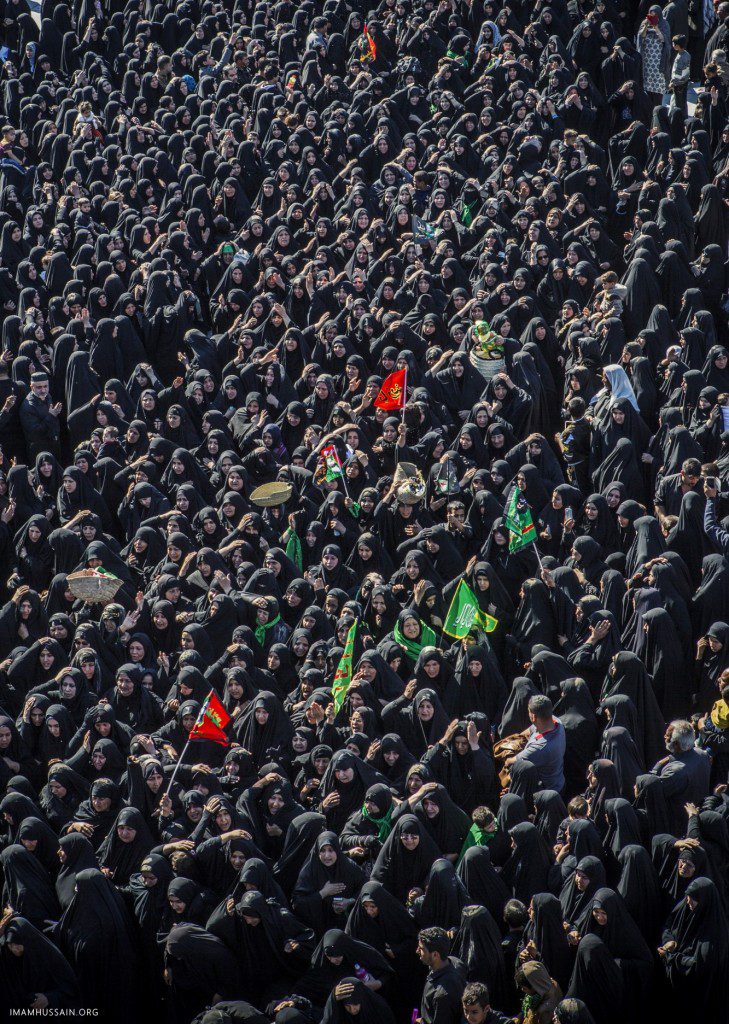Moharram rituals are part of a rich fabric of Shia religious activities. It is a month of intensified piety, and due to its public nature, men dominate, though both genders participate. These rituals span from public-based to domestic-based ceremonies.
A while ago, a fieldwork was conducted in Aliabad (a village near Shiraz) to learn more about Shia women Muharram rituals in Shiraz Iran. Women did not play prominent roles in Shia rituals in that society. Several women held weekly rowzehs, or commemorative gatherings in which a male rowzeh khan or chanter recited stories about the martyrs of Karbala and led prayers for a few neighborhood women. The women listened and wept at the saddest parts in the stories, and then afterward shared tea and some conversation.
Men’s Presence:
Generally excluded from mosque attendance, women also faced restrictions during the Muharram commemorations of the martyrdom of Imam Hosayn and his compatriots. In the lunar month of Muharram, and especially during the days leading up to the tenth day of that month, which is the anniversary of the 680 AD martyrdom, and then the third day afterward, men paraded around the village dressed in black, chanting mourning couplets and practicing self-flagellation. Older or infirm men rhythmically gave themselves symbolic taps on the head. Family men generally beat themselves on the chest, while some of the younger men struck themselves on the back with a flail of chains, an innovation imported from the cities.
Women’s Presence:
During Shia women Muharram rituals in Shiraz Iran, it was generally believed that women should ideally remain at home, though a few women and younger girls might edge along alleyway walls to watch, their veils wrapped carefully around themselves. Some watched from rooftops, making sure to stay far enough away from the edge to avoid notice. Women prepared food to distribute in connection with vows to the Karbala saints. Of course, the womenfolk of the family arranged and cooked for many of the commemorative meals held during the days of mourning.
Urban Iranian women enjoyed more opportunities to attend women’s rituals. Although in joint male-female rituals they were expected to be out of sight or segregated and formed the smaller proportion of participants, they could attend home-based sex-segregated rituals for women. Often a woman preacher, or rowzeh khan, led these less formal women’s rituals.
Women enjoyed the socializing, as well as the spiritual and emotional solace, of listening to saints’ stories, weeping, and praying, as anthropologist Anne Betteridge has documented for Shirazi women. They could hope for assistance from the martyrs with mundane problems in exchange for their devotion. Refreshments and meals also added to the attraction.
Taken from: Women of Karbala
Edited by: Kamran Scot Aghaie
